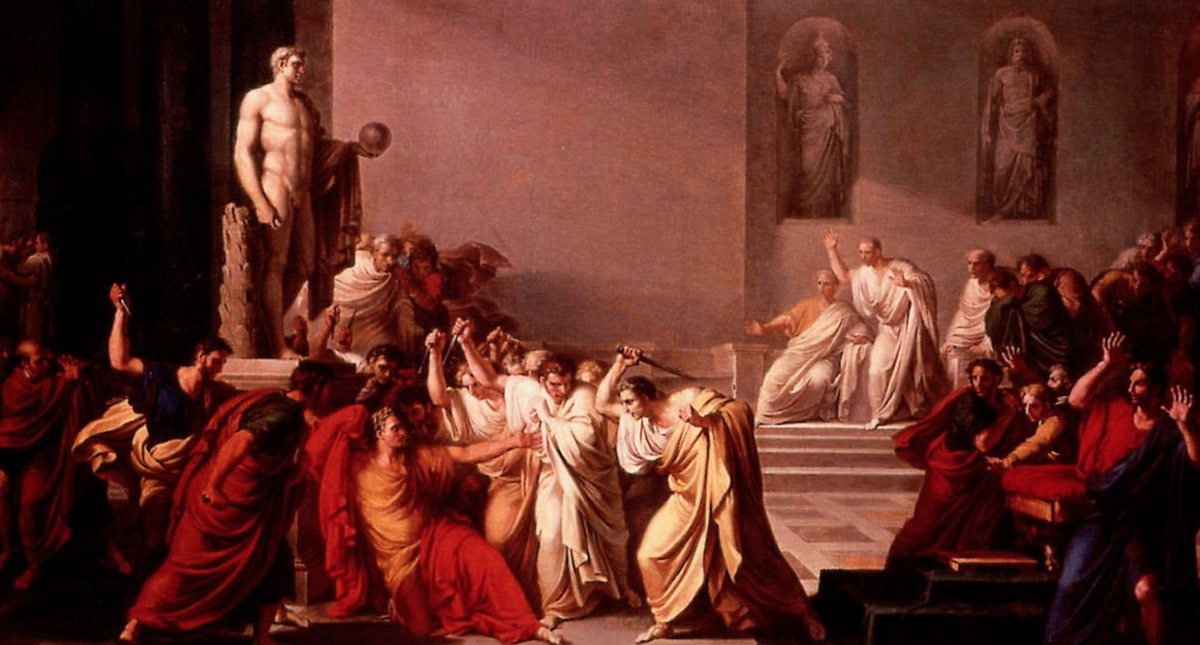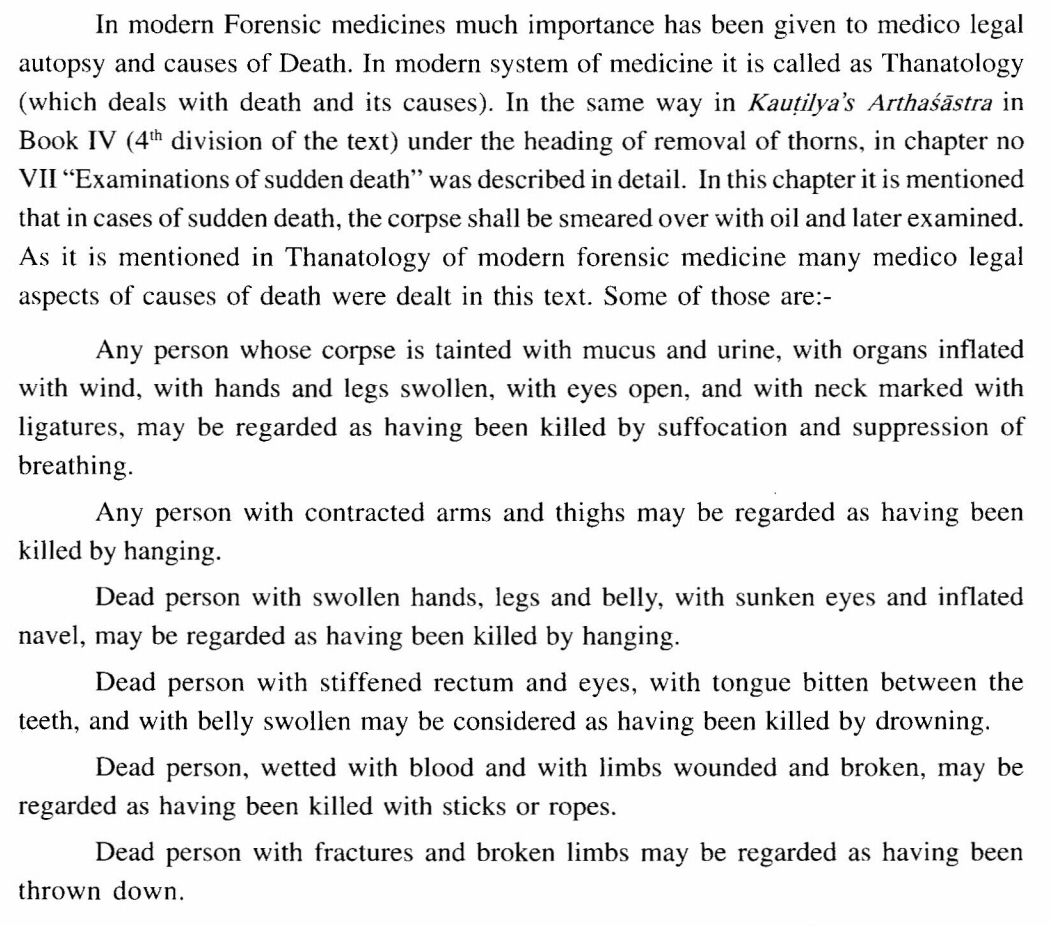An autopsy is a post-mortem examination of a body to discover the cause of death or the extent of disease. An ultimate medical audit, autopsies are the backbone of homicide investigations. But do you know how autopsies came into being? Right from the ancient times? A thread.
Autopsy: Greek, ‘to see for one’s self’.
As medicine moved from mystic art to science, so did the field of pathology.
Around 400 BC, Hippocrates (yes, the one of the oath) reasoned that diseases had natural rather than supernatural causes. But he didn& #39;t cut open bodies.
As medicine moved from mystic art to science, so did the field of pathology.
Around 400 BC, Hippocrates (yes, the one of the oath) reasoned that diseases had natural rather than supernatural causes. But he didn& #39;t cut open bodies.
Sushruta Samhita is an ancient tome of surgery compiled by Sushruta around 600 BC. A condition of the large intestine called Baddha Gudodaram, described in the Samhita, closely resembles Hirschsprung disease. How did Sushruta know? Simple. He opened up bodies. Dead or alive.
367–282 BC: Ptolemy I Soter, King of Egypt, had a keen interest in pathologic anatomy. He was the first ruler to allow medical officials to cut open and examine dead bodies (executed criminals) for the purposes of learning. Often, the King himself took part in the dissections.
Let& #39;s not forget that the Egyptians practised mummification around 3000 BC. The embalmers removed the brain through the nostrils, and the viscera through a cut on the left of the abdomen. They retained the heart though. Techniques of embalming later played a big role in autopsy.
Around 300 BC, Herophilus of Chalcedon, a Greek physician in Alexandria, performed autopsies on humans and animals on a regular basis. He was responsible for discovering the anatomical distinction between arteries and veins and between motor and sensory nerves.
Around 175 BC, the Greek Doctor, Galen of Pergamum regularly performed autopsies to correlate patients& #39; symptoms and signs on the basis of findings of diseased organs. When he didn& #39;t find human bodies, he took to cutting open animals to understand anatomy and pathology.
The first recorded autopsy occured in 44 BC when Quintus Antistius Labeo (jurist & co conspirator) examined Julius Caesar’s body after his assassination by Brutus, determining which of the 23 stab wounds proved fatal. It was one to the chest that ruptured Caesar’s aorta.
Autopsies were a major taboo in the Arab world. Yet Ibn Zuhr (1091–1161), an Arab physician who practiced in Seville & Marrakesh, performed dissections & autopsies. In his book Kitab al-Taysir, Zuhr provided accurate descriptions of the esophageal, stomach & mediastinal cancers.
The first law to authorize human dissection was established in 1231 during the reign of the Roman Emperor Frederick II, the king of Sicily. Frederick decreed that medical schools must receive at least two bodies of executed criminals each year for study and demonstration.
Let& #39;s once again go back to the BC era. Kautilya& #39;s Arthashastra (Vishnugupta, 3rd Century, BC), in Book IV, Chapter 7, describes & #39;Examination of sudden death& #39; in great detail and describes the necessity of autopsy in establishing the cause of death.
In 1247, Song Ci of China wrote Hsi Yüan Lu, an instruction manual on how to conduct medico-legal investigations, examine corpses, and determine the time and cause of death. He also described poisoning, decomposition, wounds from various weapons, strangulation, and fake wounds.
In 1302, Bartolomeo da Varignana conducted the first-known medico legal autopsy. The investigation was requested by a magistrate in Bologna. Before the advent of the microscope, his observations were limited by the power of the human eye and his tools.
Then came the Renaissance. The era of Leonardo da Vinci & Michelangelo, who performed a number of autopsies, dissecting corpses and observing the anatomy unseen by the naked eye. With the freedom they had, they pushed the frontiers of medical jurisprudence through their work.
Da Vinci& #39;s anatomical studies began in 1506 with his dissection of a 100-year-old man, whose peaceful death he had just witnessed. He acquired his first human skull in 1489, and up to 1513, he had dissected around 30 corpses, recorded in meticulous notes and wonderful drawings.
It is said that a 17 yr old Michelangelo, with the help of his friends Prior Bichiellini & Arrigo the Medico, used to sneak into the Santo Spirito morgue each night to observe corpses. Michelangelo later too to performing autopsies himself. No wonder he was such a gifted artist.
1751: British Parliament enacted the Murder Act, including the provision “for better preventing the horrid crime of murder” that some “further terror and peculiar mark of infamy be added to the punishment” The Act mandated public dissection or the hanging the cadaver in chains!
Napoléon Bonaparte reportedly requested an autopsy as his dying wish: “Make a detailed report to my son. This is very important, for my father died with symptoms very much like mine.” His personal physician, Frances Antommarchi performed the autopsy, which revealed stomach cancer
Eager to cash in on the prosperous body-snatching trend of the time, Irish immigrants William Burke William Hare murdered 16 people in Scotland, providing the cadavers to a Dr Robert Knox. Burke was hanged & his corpse publicly dissected before a large crowd on Jan 28, 1829.
It has already become a very long thread. Just one more & #39;shocking& #39; anecdote and I shall conclude. The revelation is rather more revolting than shocking, and highlights the eccentricity of scientific investigators who can go to any length to address their curiosities.
In the 1690s, Italian anatomist Antonio Valsalva habitually tasted the fluids he encountered in cadavers to try to better characterize them. One observation: “Gangrenous pus does not taste good, leaving the tongue tingling unpleasantly for the better part of a day.”
The End.
The End.

 Read on Twitter
Read on Twitter



